Do Kobe Beef Cows Have a Limit
The Untold Truth Of Kobe Beef
Over the years, Kobe beef has achieved a somewhat legendary status. It has an incredible amount of fatty marbling and a buttery, melt-in-your-mouth flavor that makes it completely unforgettable. Unfortunately, this Japanese beef is most well known for its shady history. A Forbes exposé revealed that anyone who bought Kobe beef in the U.S. before 2012 was duped because the product was illegal to import at the time, and the negative backlash didn't stop there.
In 2016, Inside Edition called out several restaurants in for falsely advertising the coveted beef, which was only licensed to be served in eight U.S. restaurants at the time. Now, a new term has popped up — "American Kobe beef" — and we had to know: What is it about this meat that makes it so marketable?
As we dove into what Kobe beef is and how it's raised, we also learned why it's so expensive: Only a select number of cattle are certified each year, making it really hard to get outside Japan. Read on to learn whether you can find it in the United States, and if it's actually worth booking a trip to Japan to get it.
The title of Kobe beef must be earned
Some foods are more than just a name: They're actually certified to earn that title. France's appellation d'origine contrôlée (AOC), for example, has rules about whether wine can be labeled Champagne and dictates growing regions for cheeses like Roquefort. Tequila has to come from certain states in Mexico, and Italy's denominazione di origine protetta (DOP) certifies real Prosciutto di Parma and authentic Parmigiano Reggiano. When it comes to Japanese beef, Kobe falls in line with these types of foods. It turns out that all Kobe beef is Wagyu, but not all Wagyu can be called Kobe.
The Japan Meat Grading Association has strict rules and standards that determine whether cattle can be classified as Kobe beef. For starters, the cow must be a breed of Wagyu — specifically a Japanese Black bloodline of pure Tajima gyu beef lineage. Then, it must be born, raised, slaughtered, and processed in the Hyogo prefecture (in case you're wondering, the capital city of that prefecture is Kobe, which is how the beef got its name). Finally, if it's between the age of 28 and 60 months and it gets the proper meat quality score, it is certified as Kobe beef. Only about 5,500 cattle meet the cut each year, which is significantly lower than the worldwide demand.
Japan's meat grading system is much stricter than the one in the US
The criteria for Kobe beef are the strictest in Japan: After meeting all the lineage and age restrictions, the beef has to pass a strict grading system that's unique to Wagyu. The United States Department of Agriculture (USDA) has its own grading system for beef, dividing it into Prime, Choice, Select, or lower grades. This system primarily determines the overall tenderness and flavor based on the cattle's age and the amount of fat streaking or marbling within the meat. The Japanese Meat Grading Association (JMGA) has a more in-depth scoring system that goes beyond the subjective tests done in other countries.
It starts by ranking beef with a yield grade of A, B, or C. The cow has to have an edible meat percentage of 72 or higher to get an A, the highest grade possible. Then, there are five quality grades that rank the beef's level of marbling, color and brightness, firmness and texture, and quality of fat. When it comes to fat marbling, the beef can receive a grade from 1 to 12 for Beef Marbling Standard (BMS); the meat needs an eight or higher to get top marks. By comparison, USDA Prime (the highest ranking in the U.S.) would receive a four using BMS standards. The beef's final grade isn't a culmination of the assessments; rather, it's awarded the lowest number received in any category, so it must earn top scores in every category to get an "A5" grade — the highest score a Wagyu can receive. WIth such stringent standards, it's no wonder so few cattle are classified as Kobe each year.
Kobe labeling isn't regulated in the US
Standards for Kobe beef might be strict in Japan, but the same can't be said for sales outside the country. In a 2015 article, Eater reported that most restaurants with Kobe beef on the menu are actually serving Wagyu, a word that literally translates to "Japanese cattle." Little has changed since then, because the U.S. has no official regulation on the use of the word "Kobe." In an interview with NPR, food writer Larry Olmstead revealed that none of Japan's trademarks and patents on Kobe beef are protected under U.S. law. Japan applied for a Geographical Indication (GI) designation in 2015 to protect the brand's labeling standards in the U.S., but the application hasn't been approved yet.
In 2014, the USDA started marketing "American Kobe-style beef," which makes things even more confusing. Since the title "Kobe" represents a place in Japan, "American Kobe" is an oxymoron.If you're not an expert, it's hard to distinguish between Kobe — a specifically graded breed of Japanese Black Wagyu — and American-raised Wagyu, which could be one of the three other official breeds: Japanese Brown, Japanese Poll, and Japanese Shorthorn. When it comes down to it, all Wagyu is genetically predisposed to have more fat than other types of beef, giving it that characteristically rich, buttery flavor. If you've never had certified Kobe beef before, it would be nearly impossible to distinguish it from a regular Wagyu steak.
It's actually pretty rare to find real Kobe
According to Food and Wine, Japan only exported 10 percent of its Kobe beef each year, as of 2015. Considering that only about five thousand cattle make the cut to certification, and Japan exports to several countries other than the U.S., that means the entire world has to share 500 head of cattle. That's barely enough to satisfy the needs of 77 Americans each year. In case you were curious, A Well-Fed World estimates that 39 million cattle are processed in the U.S. each year.
The supply itself isn't the only rare thing; restaurants in the U.S. actually have to be licensed to serve Kobe beef. In 2016, that list only included eight restaurants: two in California, three in Las Vegas, and one in New York City, Dallas, and Hawaii. Today, the official Kobe Beef Marketing & Distribution Promotion Association lists 29 restaurants across the U.S., along with a handful of authorized wholesalers. Even still, that's a pretty limited number considering how many restaurants put the word "Kobe" on their menu.
Real Kobe beef is very expensive
When you put it all together — the strict grading standards, the limited supply, and the worldwide demand — you can understand why Kobe beef is so expensive. If you happen to find it for a value price, you're probably not eating real Kobe. In his book Real Food Fake Food, Larry Olmsted (the Forbes reporter that broke the original Kobe beef scam story in 2012) explains that there is "no 'bargain' Kobe. At the source in Hyogo it is $120 to $200 a pound, and this is as cheap as you can find it in the world."
CNN Money calls it one of the world's priciest foods, and you should expect a four-ounce steak to set you back at least $50. Of course, if you have your Costco card handy, you may be able to find deals on Japanese A5 Waygu beef (the highest graded Japanese beef under Kobe) that bring the price down to $110 a pound, but you'll have to be ready to take on an 11-pound roast (an impressive $1,200 investment).
Real Kobe beef is 100 percent traceable
Because there are so many impostors, the Kobe Beef Marketing & Distribution Promotion Association created a unique traceability system. Each certified cattle comes with a birth certificate, along with a 10-digit ID number. Enter the number on their website to learn more about where the cow was born and raised, information about its pedigree and lineage, and ultimately confirm whether it's actually certified Tajima-gyu Kobe beef.
Any restaurant or butcher shop that sells Kobe beef should be able to provide you with this 10-digit ID number, along with other impressive-looking certificates and official paperwork with fancy seals. It's not foolproof, though; many of these documents are in Japanese, so unless you have a translator or speak the language yourself, it may be hard to tell if the forms are counterfeit. Anyone who previously purchased Kobe beef could also produce an old certificate and claim it goes along with the meat you're eating today.
Kobe beef smells better than regular beef
If you're a beef connoisseur, you may not need ID numbers or certificates to confirm that you're eating the real deal Wagyu beef (which includes Kobe beef): You can use your nose. Research from the Journal of Agricultural and Food Chemistry pinpoints the science behind Japanese Black Wagyu's alluring aroma. The researchers found 16 compounds that come together to give the beef its sweet, almost coconut-like aroma.
NPR sat down with the lead researcher, Satsuki Inagaki, who revealed that many of the compounds they identified are found in other foods, like cooked chicken, beer, fennel, egg whites, tea, citrus fruits, and peanuts. What makes Wagyu unique is the way it combines all these compounds with a compound specifically derived from fatty acids. The genetics in Wagyu beef allow it to get close to a 40 percent fat content, which is much higher than regular beef, and cooking that fat apparently releases some pretty alluring smells.
Of course, picking up on that tasty aroma won't tell you if it's Kobe or just regular Wagyu, but it will let you know that you're eating something better than standard American beef.
Kobe's fat might also be healthier than other beef fat
Fat has gotten a bad rap over the years, so you might think that Kobe beef would be bad for you because of its especially high levels of marbled fat. It almost contains more white fat than red-colored meat! Luckily, it may be a myth that eating fat makes you fat. A 2010 study of over 340-thousand individuals found no association between saturated fat consumption and heart disease, and studies on low-fat diets have failed to link decreased fat intake with weight loss.
Not only that, but the specific type of fat found in Kobe and Wagyu beef might actually be good for you. A 2016 study explains that meat "plays a pivotal role in a nutritious diet," and the fats found in Kobe and Wagyu beef are especially nutritious. They have a higher concentration of monounsaturated fatty acids and oleic acid as compared to meats with less marbling and intramuscular fat. These components may work together to reduce the risk of cardiovascular disease while decreasing LDL (or "bad") cholesterol.
Kobe fat has a lower melting point, so it literally melts in your mouth
Have you ever had a steak with a chewy piece of fat? It's not very palatable, that's for sure! Luckily, it's unlikely you'd run into that problem with Kobe beef. The marbled fat's high percentage of monounsaturated fatty acids in Wagyu beef actually lower its melting point to below human body temperatures, creating a flavorful, softer beef fat that literally melts in your mouth as you eat it.
Kobe beef fat melts at 77 degrees Fahrenheit. By comparison, regular beef fat starts to render at between 130 to 140 degrees (according to Amazing Ribs), and the process can take hours when the beef is held at these temperatures. Because the fat in Kobe beef is evenly dispersed throughout the meat and isn't just contained in a fat cap on top of the steak, that low-temperature melting point has amazing consequences. It gives the meat a buttery flavor and texture that's really hard to beat.
Kobe beef won't taste as good if you eat it as a steak
We've spent a lot of time talking about how Kobe beef has a higher-than-normal fat content, which is the main reason the meat has such a distinct flavor and aroma. Unfortunately, it is possible to have too much of a good thing, and you definitely wouldn't want to eat an entire Kobe beef steak. The fat would be too filling and rich, and you'd start to feel sick halfway through the meal.
Bon Appetit advises serving thinly-sliced Kobe beef in small, three- to four-ounce portions. Try cooking it for traditional Japanese dishes like sukiyaki or shabu shabu, one-pot meals that cook the fatty beef to rare temperatures. These dishes contain flavored broths, vegetables, and rice or noodles to deliver the full benefit of the rich beef without overloading your taste buds. Plus, it helps keep the costs down to a reasonable price; considering that Kobe beef costs about $150 a pound, it's more affordable to buy it by just an ounce or two.
How are Kobe beef raised? Not by eating grass.
You might be wondering about the rumors of ranchers who feed their Kobe beef beer and give the cattle daily massages. While that treatment is not exactly true (though those things may occur in some small numbers), it may make you wonder how Kobe beef is raised to get such high levels of marbling. It's not by eating grass, as grass-fed beef have much less fat overall and considerably less intramuscular fat.
So what makes Kobe beef so delicious? It's all about diet and time. According to the Kobe Beef Marketing & Distribution Promotion Association, it starts with good, clean water. They also admit that the cows are given no pasture grass at all to eat, but they do have access to dried forage grasses along with rice straw, soybeans, corn, barley, wheat bran, and other nutrition-rich supplements. The grain isn't intended to fatten them up quickly, either. Cooking Light talks about the benefits of moving cows off pasture to U.S. feedlots to get them to slaughter weight faster, but speed isn't the goal with Kobe beef. Whereas U.S. beef is fed for 16 to 18 months (according to NPR), Kobe beef is fed for at least 30 months, and that extra time allows them to develop more flavorful fat.
Eating beef was once forbidden in Japan
It's a little surprising that the best beef in the world comes from Japan, a country that didn't eat meat until the late 1800s. For more than 12 centuries, the Japanese avoided eating meat altogether. Their population was majority Buddhist, who believed that their ancestors could be reincarnated as animals. No one wanted to run the risk of eating their reincarnated family and friends, so meat consumption was taboo. A government decree even mandated that anyone who ate beef had to repent for 150 days.
So what changed? Emperor Meiji opened Japan up to the rest of the world in the late 1800s. That decision had two implications: he noticed that meat-eating Europeans had taller, healthier physiques than his people, and outsiders gained access to the country's previous isolated, pure-bred livestock. They sang the praises of this high-quality meat, and Meiji saw it as an opportunity to boost the health of his people and modernize the country. When he publicly ate meat in 1872, he effectively gave the Japanese people permission to do the same. By 1919, Japan had ramped up their breeding programs to have enough beef supply to support their new consumption, and the term "Wagyu" was created.
Kobe Bryant sued the city of Kobe for the naming rights over the beef
Can you imagine loving an ingredient so much you named your child after it? According to the official Kobe beef legend, Kobe Bryant's parents were so moved by the beef that they named their son "Kobe" after a visit to Japan. The marketing board claims this is "lasting proof that, even as time goes by, the flavor of Kobe beef remains sharp in people's memories." Unfortunately, the retired NBA star didn't share the sentiment.
In 2010, LA Weekly reported that Bryant filed a lawsuit against the city of Kobe for the naming rights to the beef. His attorney, Jeff Rundvlees, was quoted saying that while the city was around first, "Mr. Bryant has clearly become more famous and influential. I mean, just type 'Kobe' into Google and tell me what comes up first." The former Laker was not only asking for back-compensation for the sales of Kobe beef, but he also wanted the product renamed because it didn't "fall in line" with his very specific brand. He must have gotten over it because he later went on Good Mythical Morning to compete in a blind tasting of real Kobe (the "Black Mamba of meats") and the cheap stuff. He jokes that it is "ridiculous" that he was named after beef, but you can't help but notice how much he enjoys eating it.
Source: https://www.mashed.com/159151/the-untold-truth-of-kobe-beef/
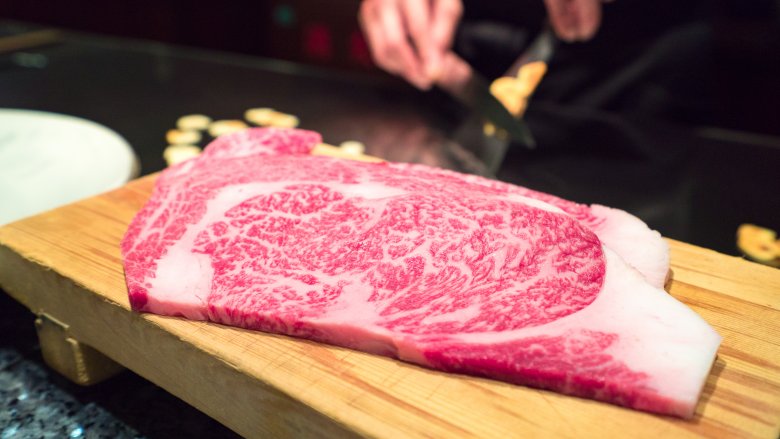
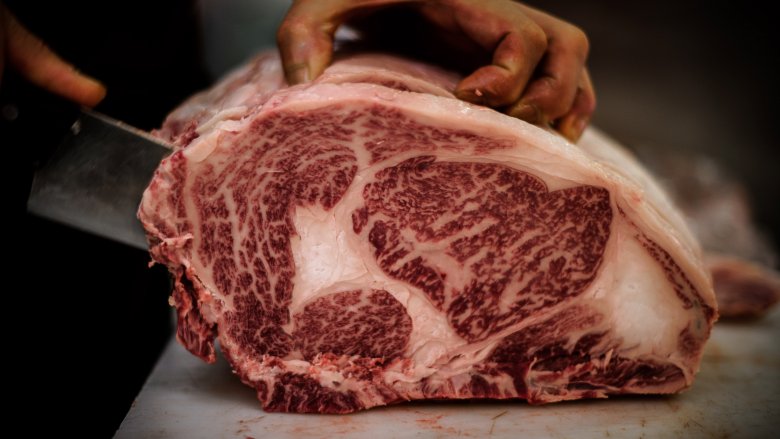
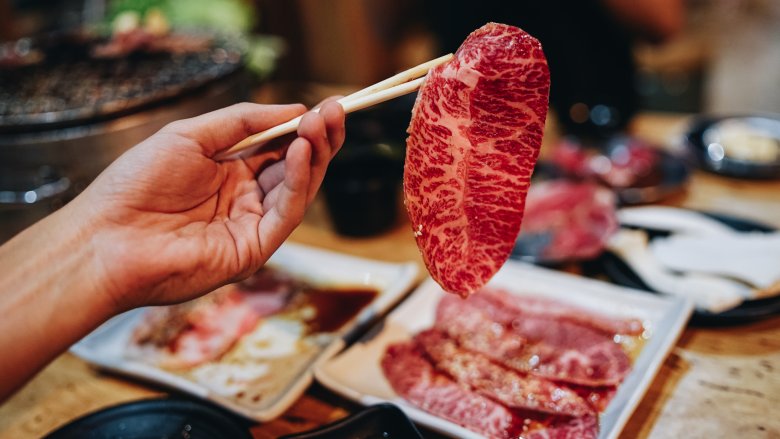
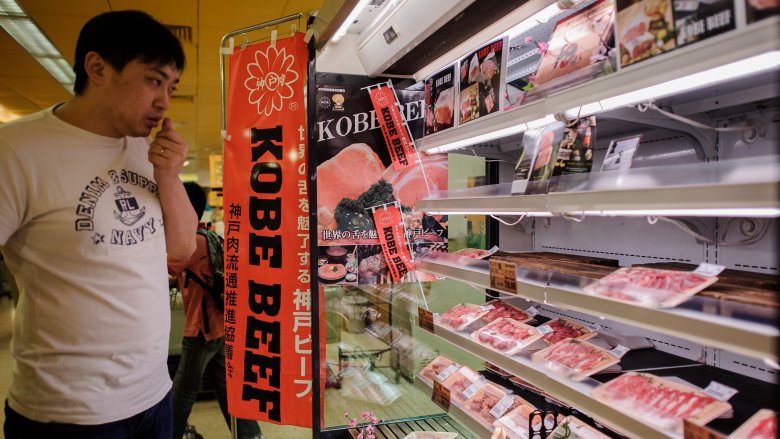
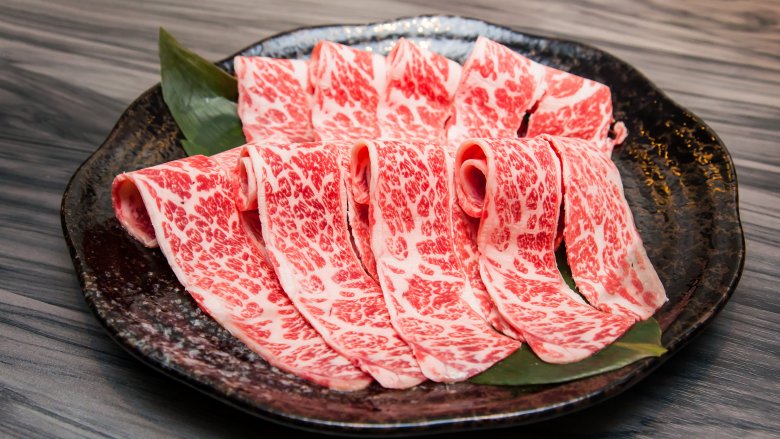
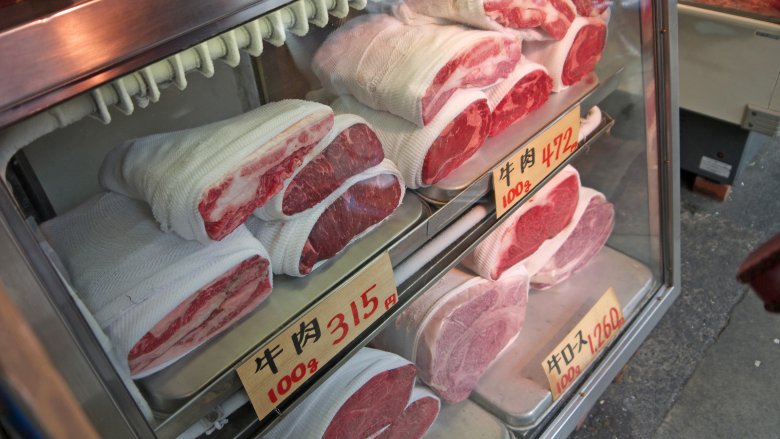
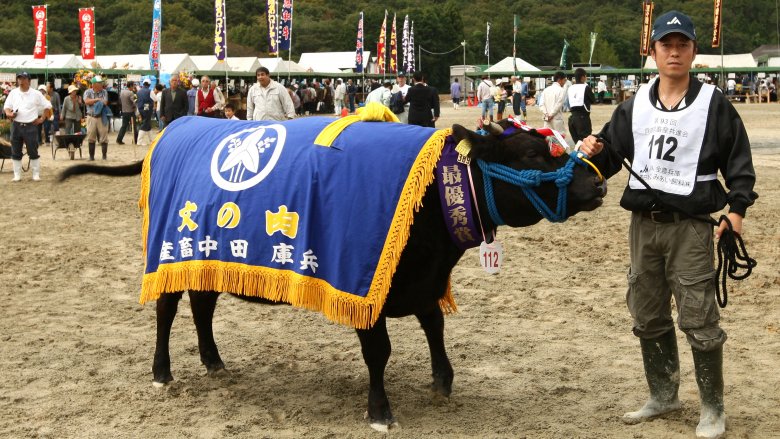
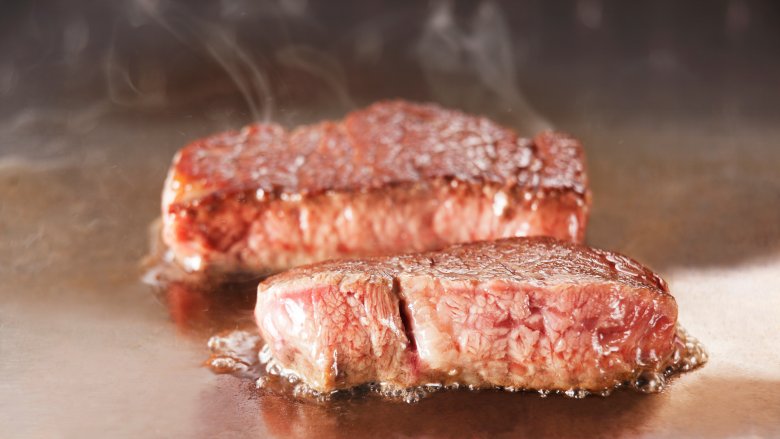
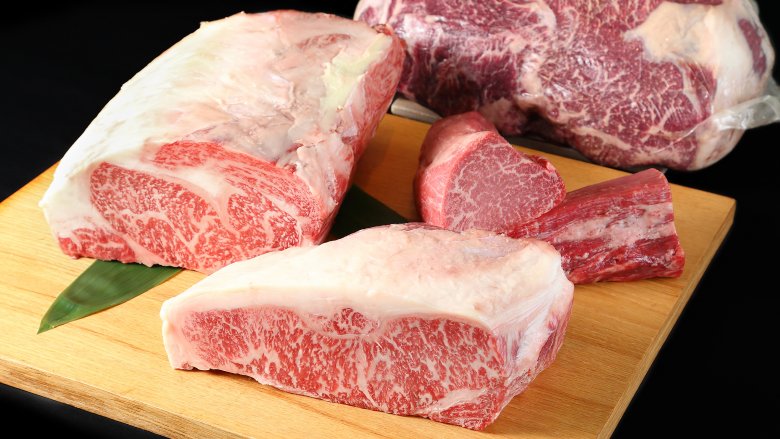
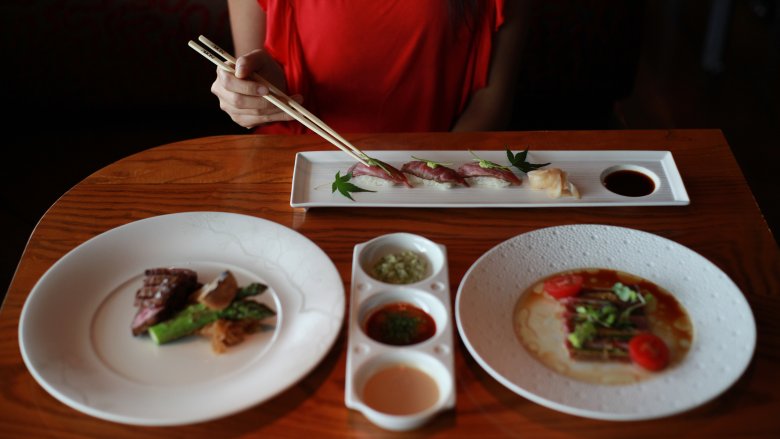
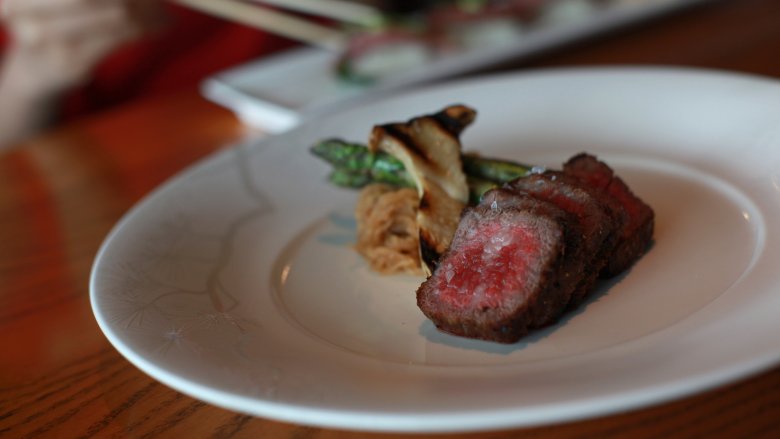
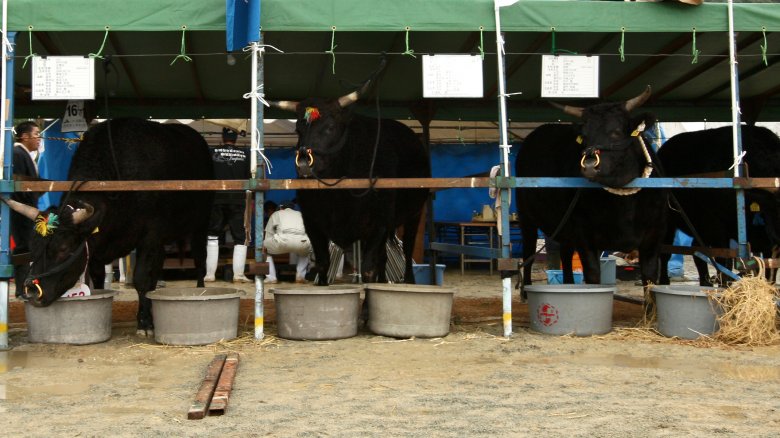
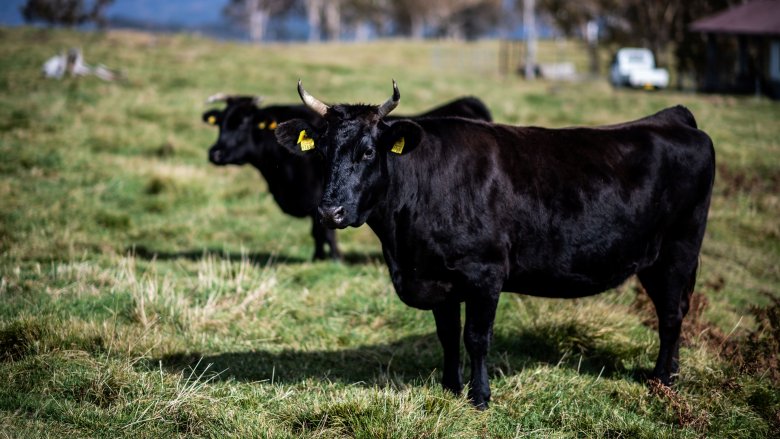
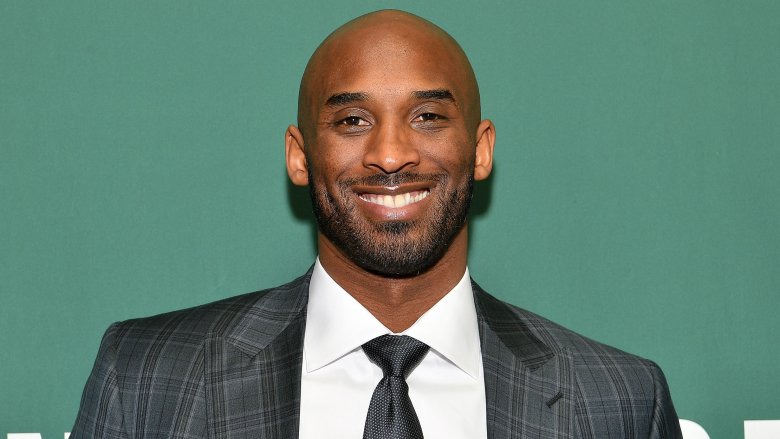
0 Response to "Do Kobe Beef Cows Have a Limit"
Post a Comment